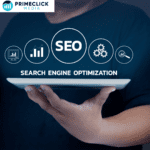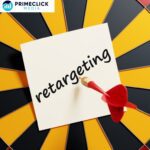As a business owner, one of the most detrimental things you can do is to send generic ads to customers multiple times. They are annoying and irrelevant to the customers, hence, they do not convert. Personalised ads are a game-changer and useful for effectively reaching your target audience. This article will help you unleash the power of personalised advertising for a better conversion rate.
What is personalised advertising?
Personalised advertising involves analysing customer data such as search history, preferences, demographics and purchase history to deliver tailored ads suitable for each customer. It uses data analytics and machine learning to understand user behaviour and creates ads that resonate with them. This contrasts with generic advertising in which you send the same ads to all your customer base with different interests and needs.
Benefits of personalised advertising
The following are the reasons why personalised advertising is beneficial for your business:
1. Improve relevance
With the number of irrelevant ads received daily, it is a usual practice by the audience to ignore them. It is, therefore, important that business owners send out tailored ads relevant to the audience. This relevance stands out and captures their attention quickly.
2. Increase conversion rate
Sending ads specific to customers increases the likelihood of them purchasing or carrying out some other action. This is because they are interested in the products or services you are advertising. Your customers have probably also been thinking about purchasing your product before receiving the ad. This ultimately leads to a better conversion rate for your ads.
3. Foster brand trust
An Adobe study revealed that seven out of ten customers patronise businesses they trust more. Receiving relevant ads is a great way for customers to build trust in your business. A good reason for this is that they believe you understand them and prioritise their needs. Overall, it also increases their loyalty to your business.
4. Improve user experience
Personalised ads improve the experience of your customers with your business. By providing them with meaningful content, they experience delight in your service. This helps improve brand trust and customer retention rate.
5. Optimised ad spend
Personalised advertising ultimately increases the conversion rates of your ads. This helps you effectively allocate your budget on ads and achieve a better return on investment.
How to leverage personalised advertising in digital advertising
The following are some strategies for incorporating personalised advertising in your ad campaigns:
1. Data collection and analysis
You can start by collecting relevant data from your target audience such as their preferences, interests and purchase history. This is important for understanding your target audience to deliver ads that are relevant to them. AI is a great tool for collecting and analysing data to derive meaningful insights about your target audience. You can also use surveys or questionnaires for data collection.
2. Customer segmentation
Based on the data, the next step is to segment your customers based on their characteristics or similarities and differences. For example, you can group customers based on their genders, age groups, skin types, and food choices. This segmentation would help to develop campaigns that resonate with the interests of each group.
3. Buyer personas
A buyer or user persona is a fictitious representation of your ideal customer based on data collected. This is necessary for product development, creating campaigns tailored for them and improving customer retention. Coca-Cola incorporated personalisation with the “Share a Coke” campaign in 2011. This campaign entailed imprinting people’s names on their bottles. Customers were excited to find their names on bottles such as “Share a Coke with Tola”. This increased their sales by 7% as over 250,000 personalised bottles sold in the first three months of launch.
4. A/B testing
All campaign strategies require continuous testing for effectiveness. You can try different personalisation strategies and see which resonates best with your target audience. Request feedback from your customers to know how they feel about your ads.
5. Data privacy
You must prioritise customer data privacy, especially during collection. Make sure to ask permission before collecting their data and explain the purpose of it. Also, assure them that you will comply with data protection ethics and responsible data use.
Conclusion
Personalisation is a powerful tool to attract your target audience with content that is relevant to them. It requires a combination of strategies and continuous testing for optimal performance. Book a free consultation with PrimeClick Media and let our team of experts guide you through hitting your sales target with personalised advertising.





